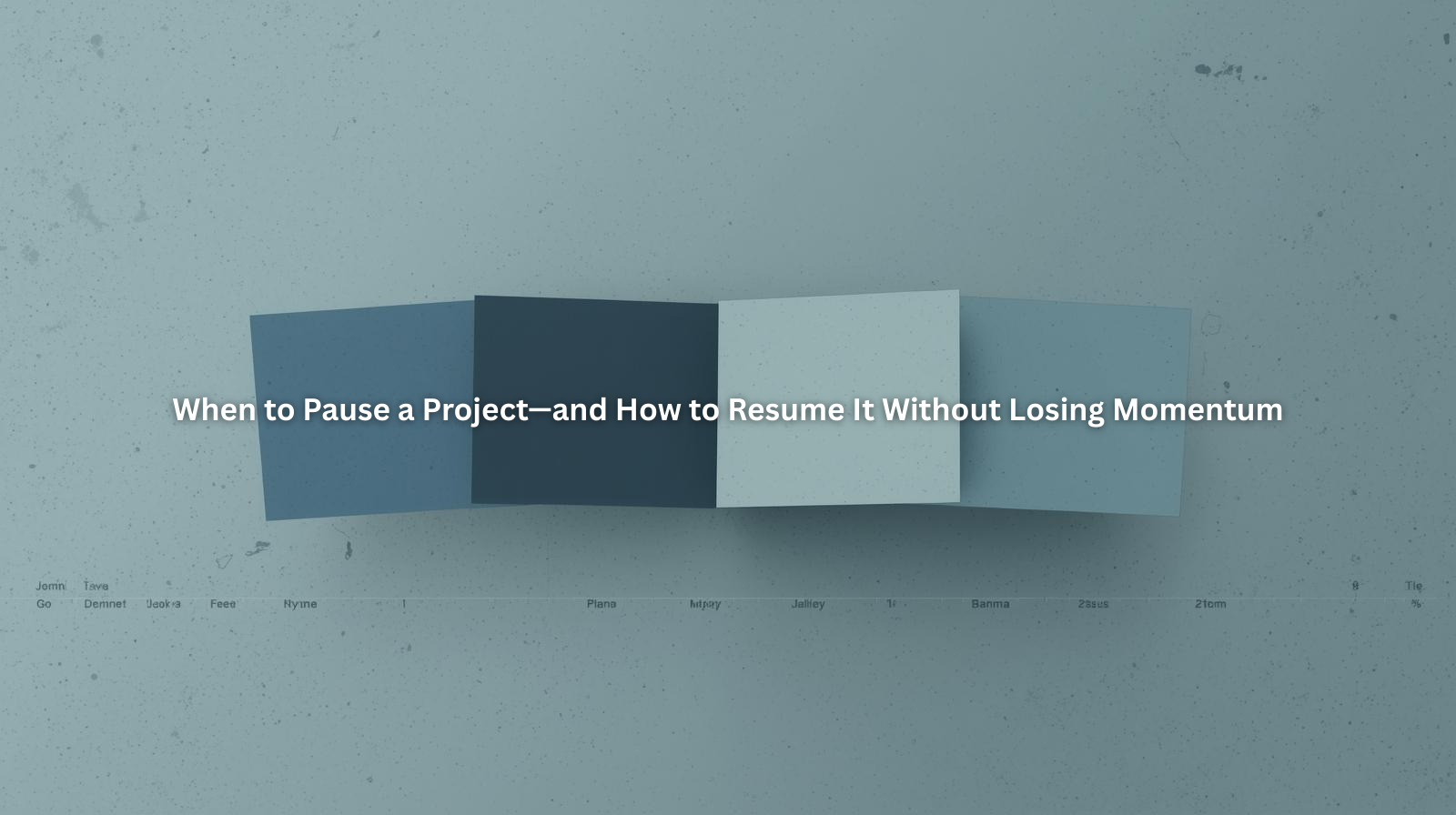The Power of Transparency: Sharing Your Progress Without Overwhelming Clients

Table of Contents
- What Freelancers Get Wrong About Client Updates
- Why Transparency Builds Better Relationships
- The Fine Line: Keeping Clients Informed vs. Overwhelmed
- What Clients Actually Want to Know
- How to Build a Light-Touch Update Habit
- How ProjectBook.co Helps You Share Progress Seamlessly
- FAQ: Communicating Progress Without Creating Chaos
1. What Freelancers Get Wrong About Client Updates
If you’ve ever wondered “Should I send an update?” you’re not alone. Many freelancers struggle with when, how often, and how much to share during a project.
Some people overdo it—pinging clients with every micro-task or thought, turning a calm project into a barrage of messages. Others under-communicate, afraid to “bother” the client—only to create uncertainty and make clients feel in the dark.
Neither extreme is ideal. Clients don’t want to be micromanaged, but they do want to feel like their project is moving forward, and that you’re paying attention.
The goal isn’t constant contact. It’s thoughtful visibility.

2. Why Transparency Builds Better Relationships
When you’re transparent with your clients, you build trust. It’s that simple.
Clients hire freelancers because they’re investing in outcomes they can’t produce themselves. That puts them in a vulnerable position—they’re relying on your skill, your timing, and your ability to deliver.
Transparency offers reassurance. It says, “I’ve got this. Here’s where we are. Here’s what’s coming next.”
Even a quick update at the halfway point of a timeline can make your client feel more supported. It reduces anxiety, keeps you top of mind (in a good way), and sets the tone for clear communication throughout the project.
3. The Fine Line: Keeping Clients Informed vs. Overwhelmed
Too much information can backfire. If your updates are overly detailed, frequent, or full of jargon, you might confuse your client—or worse, make them think you’re overwhelmed.
So how do you strike the right balance?
- Keep updates short and clear. A few bullet points or a paragraph works great.
- Share progress in terms of outcomes, not just effort. (“First draft is 80% done” is better than “Spent 3 hours writing.”)
- Frame the update around where you are, what’s coming next, and what (if anything) you need from them.
Think of it like a GPS: clients want to know where they are on the journey—not every turn you’ve taken to get there.
4. What Clients Actually Want to Know
Most clients care about three things during a project:
- Is this on track?
- They want to know the project is progressing as expected and will be done when promised.
- Do I need to do anything right now?
- Clients are busy. Make it easy for them to see when it’s their turn to act.
- Are there any red flags I should know about?
- If something’s off-schedule or blocked, say so—with a proposed solution.
They don’t need to know every internal decision or edit you made along the way. Your job is to filter information and share what’s useful, relevant, and confidence-building.
5. How to Build a Light-Touch Update Habit
You don’t need a fancy status report template to stay transparent—you just need consistency and tone.
Try this cadence:
- Onboarding: Set expectations about how and when you’ll communicate.
- Midpoint update: One short message midway through the timeline.
- Before delivery: A heads-up when deliverables are coming.
- Blocked or delayed: An update any time something stalls, with context.
- Project wrap-up: A final message summarizing what’s been done and what’s next.
You can even reuse a short structure like:
“Here’s what I’ve completed this week, what I’m currently working on, and what’s coming next. Let me know if you have any questions!”
The more consistently you use this rhythm, the easier it gets. Clients learn what to expect—and you free up time spent writing ad hoc updates from scratch.

6. How ProjectBook.co Helps You Share Progress Seamlessly
If you’re tired of juggling email threads, Slack DMs, and mental reminders to send updates, ProjectBook can help you shift from reactive communication to calm, structured transparency.
With ProjectBook, you can:
- Give clients access to their own project dashboard—so they can see real-time progress without asking
- Create phases, milestones, and task statuses that make it easy to show movement
- Add notes or update summaries to each phase so clients see your progress in context
- Flag tasks as “waiting on client” to keep communication clear without finger-pointing
- Schedule reminders or touchpoints so you never forget to check in
The best part? It all lives in one place, so updates feel like a natural part of your workflow—not an extra thing to remember.
7. FAQ: Communicating Progress Without Creating Chaos
What if my client never asks for updates—should I still send them?
Yes. A quick check-in helps avoid surprises. It shows you’re proactive and on top of things, which most clients value even if they don’t say it outright.
How often should I update clients during a project?
Once at the halfway point, once before delivery, and anytime something changes. High-touch clients may appreciate weekly check-ins, but most are happy with clear, occasional touchpoints.
What if I’m behind on something—should I still update?
Absolutely. Communicating delays early builds trust. A short, honest message with a revised plan shows you’re responsible, not flaky.
Can ProjectBook really replace client check-in emails?
Yes! You can give clients limited dashboard access or use internal tools to generate shareable updates. No more digging through your inbox for status details.
Final Word
Being transparent with your clients doesn’t mean flooding them with every update—it means giving them the right amount of information at the right time.
When you communicate clearly and proactively, you build stronger client relationships, reduce last-minute surprises, and show up as a trusted partner—not just a service provider.
With tools like ProjectBook.co, it’s easier than ever to keep clients in the loop without creating more work for yourself. You stay organized. They stay informed. And everyone feels more confident along the way.
So the next time you ask, “Should I send an update?”—you probably already know the answer.
Yes. But make it thoughtful. Make it useful. And make it easy.


